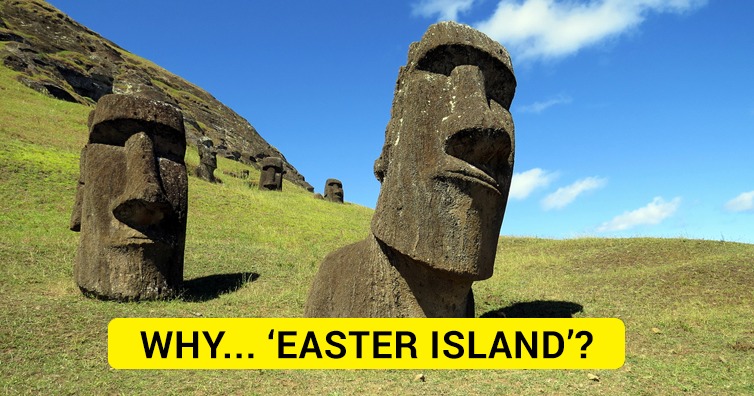Located some 2,300 miles (3,700 Km) from Chile’s west coast, this Pacific Ocean island is famous for two things: its almost 900 giant stone figures and its weird name; Easter island. And even though we’ve got used to it, one can easily wonder: why Easter island? What’s the connection between the island and the Easter holiday?
Well, wonder no more you useless info junkie; it’s time to find out.
On Sunday, April 5th, 1722, Dutch explorer Jacob Roggeveen was sailing the Pacific ocean, when he found a small island. Because that specific Sunday happened to be Easter on the Christian calendar, the island was named “Paasch-Eyland”, which is Easter island in Dutch. The name stuck even when it was annexed in Chile in 1888, as the island kept its name “Isla de Pascua”. But what’s the deal with the monumental statues? (the article continues after the ad)
The 887 statues called Moai (which, besides their heads, also have bodies), were created by the early inhabitants of the island at around 1400 – 1650 A.D.. They average 13 feet (4 meters) high, they weight 13 tons each and they were carved out of rock formed by volcanic ash. The biggest one is about 32 feet (9,7 meters) tall and weights a whopping 82 tons (74,500 Kg). It’s still unknown why they were originally built even though it’s widely believed by scholars that they were made to honor important people who had passed away. And that’s why they have different characteristics, because its and every one represents a different figure.
If you like what you read, then you will definitely love this one: The Hidden Bodies Of The Famous Easter Island Heads (PICTURES)
Main Article Photo: David Berkowitz / Flickr
Photoshop: I’m A Useless Info Junkie
Sources: How Easter Island Got Its Name | EASTER ISLAND | Moai statues



